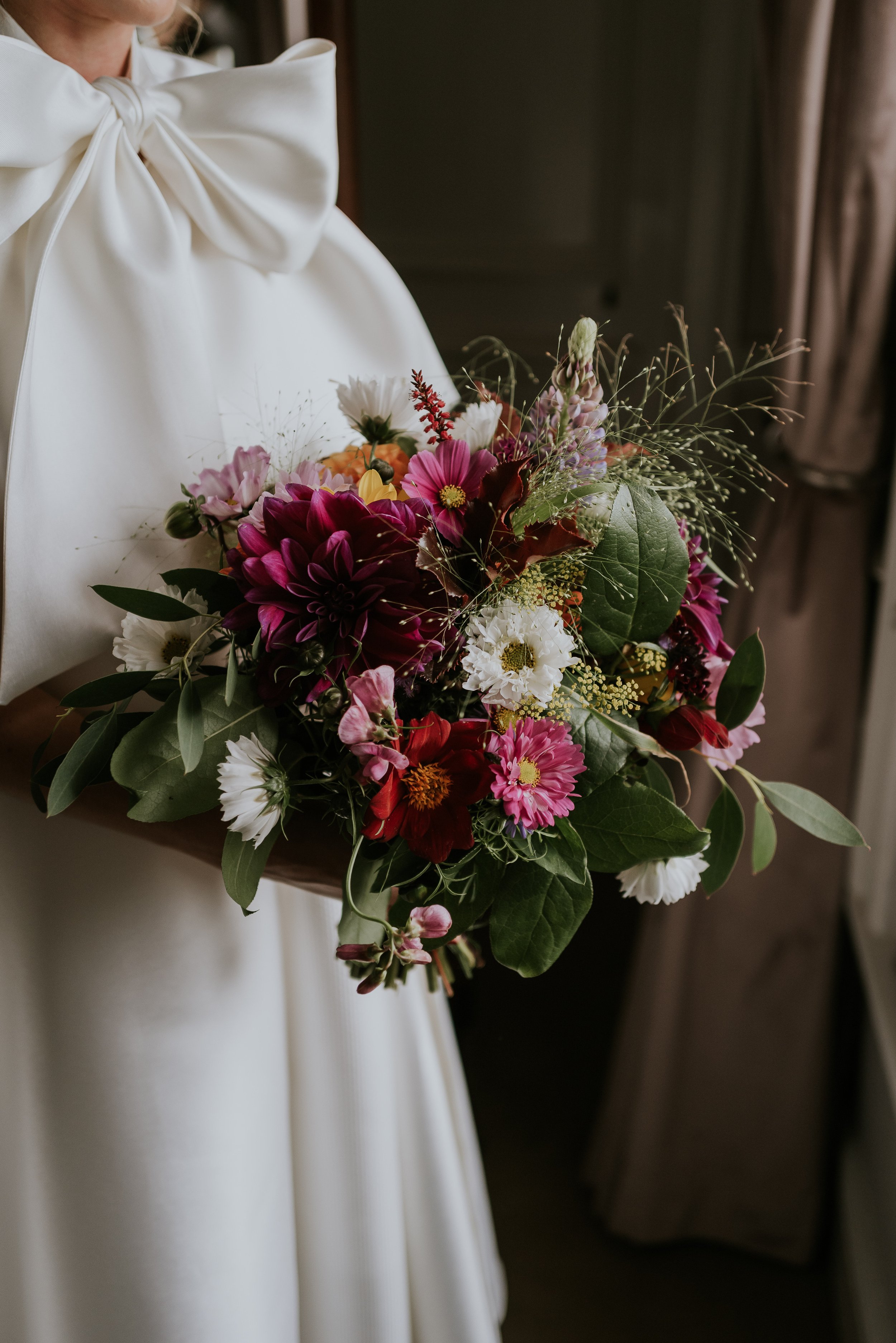
Seasonal Garden-style Flowers
Events flowers in Co. Clare such as an intimate dinner, a corporate lunch, hotel arrangements, funerals and parties…
Spring
Spring is the season where everything starts. Seeds get sown between February and March in our place as we only have a small lean-to to start off our seedlings. Recently we used a heated bench, which is an enclosed area made with second hand pallets, it’s filled up with fresh manure (we used sheep manure and straw last year but cow manure is fine too). The bed is heating up creating heat which will keep a steady temperature for the seedlings to grow on top of a wooden or lined structure. Our Off-grid farm is self sufficient, finding heat from solar energy or biomass.
What flowers will you find in the farm in spring?
Daffodils, tulips, Lunaria, Hesperis matronalis for the first half of spring. April and May the cut flower season is starting, plants which we grew in autumn are blooming can be harvested now: Icelandic Poppies, Ranunculus, Stock. Dahlias tubers can be potted up to be planted outside in June.
picture by http://awakeanddreamingweddings.com
Summer
Early summer is good for catching up with seed sowing, as the days get warmer and the light is great.
May is for the roses, lupins and Icelandic poppies, then in June: Foxgloves, Geums, Delphiniums, Cornflowers, late annual Phlox, Sweet Peas and plenty of Calendula varieties are starting to bloom.
Wild Honeysuckles, Purple loosestrife and Meadowsweet are between my favourite native flowers I find at the edges of my farm.
Perennial Phlox, Astrantias, the first few Sunflowers, Phacelia, Alliums are between some my flower selection. Dahlias tubers can start to be planted outside.
Late June is great for sowing perennials and biennials so that they can overwinter and be planted in autumn.
Autumn
August, September and October have an abundance of Dahlias, Rudbeckias, Cosmos and a second flush of many other plants and Wild Scabious which I love mixing up. Grasses are added to bouquets too.
Straw flowers, Statice and other plants get harvested and we leave them to dry for winter or early spring creations.
Autumn is great for dividing established perennial plants, and re-plant to create abundant areas of one variety. We take cuttings and split Dahlias in October to save the tubers for the following year. We clean our beds and tunnels and start sowing for our spring hardy annuals.
Winter
The winter is time to rest the land and ourselves.
We spend time designing the next year garden, clear beds and patches, we make sure trees are planted, shrubs are moved in the right spot for easy access and if we need to move them around… this is the perfect time. We start selecting seed for the following year. New areas in the garden are reclaimed using no-dig method, which allow us to cover the grass and weeds with cardboard and mulch with a nice 3/4 inches of compost. This is a fantastic method which is not disturbing the soil and the ecosystem underneath, the weeds weaken and it’s easier to pull them when they raise back to the surface. To mulch we use our farm yard manure and well rotted horse or cow manure from neighbour farmers. Seaweed is also a beautiful mulch which we gather from the shore. The washed off rotted seaweed is amazing to cover beds over winter, to keep nutrients in the soil.












My Process
Picking & Conditioning
Each of my flowers are picked either early in the morning or in the evening to allow them to keep in their moisture. I condition them in a non-toxic, natural solution using cold water, sugar and vinegar to help keep them hydrated for longer.
Extra Touches
I also cut 1cm to the stems on a diagonal after a few days too. This ensures the rotten stems are not leaving bacteria in the water that may obstruct the uptake of nutrients for the flowers.

Caring for your Flowers
Firstly:
Fill a vase with water, making sure that all of the stems can reach it, add one teaspoon of sugar and one teaspoon of vinegar or nothing at all. Sugar feeds the plants and vinegar helps to adjust the PH in the water. Some add bleach instead, but not ideal for the environment.
After two or three days:
Change the water and add the same solution. Cut flowers 1cm diagonally up the stems. This will prevent rot at the stems and prevent bacteria building up in the water to help prolong the life of your flowers.
My flowers are conditioned for at least 24 hours prior to sale. This allows them to stay fresh for longer.
No chemicals are added, but they are still not edible. Keep away from heat when you have them at home.







